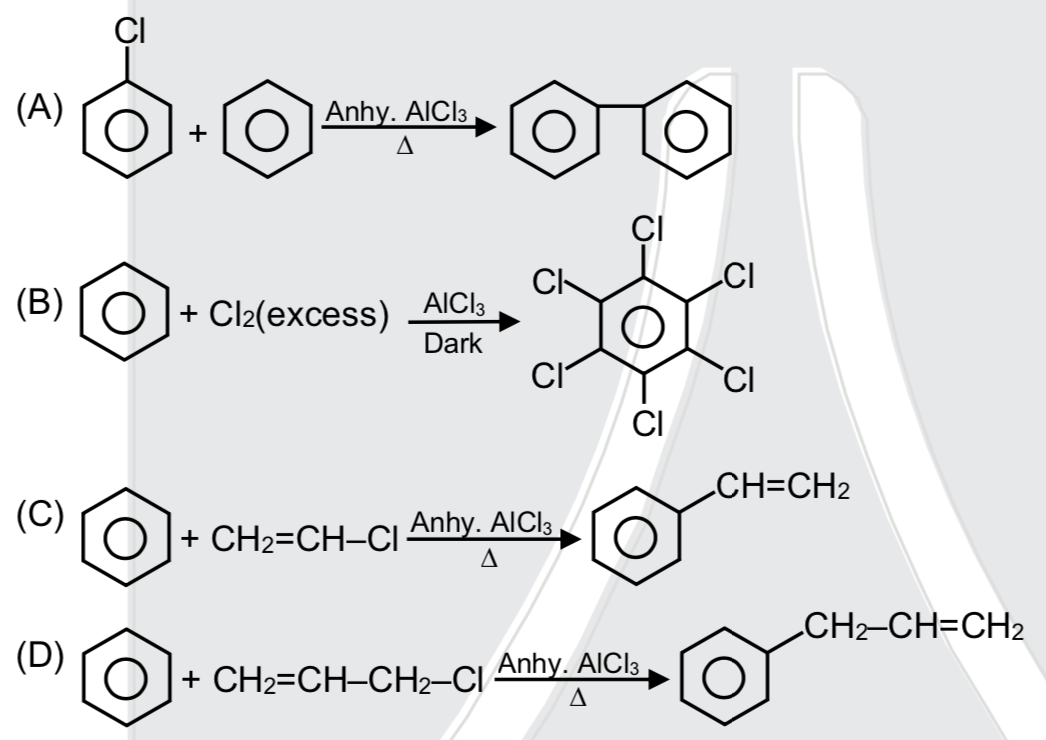Which of the following arrangement is possible ?
nlms522+12
nlms220−12
nlms3−21+12
nlms001+12
The correct Answer is:A
To solve the question regarding which arrangement of quantum numbers is possible, we need to analyze the given sets of quantum numbers based on the rules governing them. The quantum numbers are:
1. Principal Quantum Number (n): This can take any positive integer value (n = 1, 2, 3,...).
2. Azimuthal Quantum Number (l): This can take values from 0 to (n-1).
3. Magnetic Quantum Number (m): This can take values from -l to +l.
4. Spin Quantum Number (s): This can take values of +1/2 or -1/2.
Now, let's analyze each arrangement provided in the options.
1. Option 1: n = 5, l = 2, m = 2, s = +1/2
- For n = 5, possible values for l are 0, 1, 2, 3, 4 (since l can be from 0 to n-1).
- l = 2 is valid.
- For l = 2, possible values for m are -2, -1, 0, +1, +2 (since m can be from -l to +l).
- m = 2 is valid.
- s = +1/2 is valid.
- Conclusion: This arrangement is possible.
2. Option 2: n = 2, l = 2, m = 0, s = -1/2
- For n = 2, possible values for l are 0, 1 (since l can be from 0 to n-1).
- l = 2 is not valid (it exceeds the maximum value of n-1).
- Conclusion: This arrangement is not possible.
3. Option 3: n = 3, l = -2, m = 0, s = -1/2
- For n = 3, possible values for l are 0, 1, 2.
- l = -2 is not valid (l cannot be negative).
- Conclusion: This arrangement is not possible.
4. Option 4: n = 0, l = 0, m = 0, s = -1/2
- The principal quantum number n cannot be 0 (it must be a positive integer).
- Conclusion: This arrangement is not possible.
Final Answer:
The only possible arrangement is Option 1: n = 5, l = 2, m = 2, s = +1/2.
---
2. Azimuthal Quantum Number (l): This can take values from 0 to (n-1).
3. Magnetic Quantum Number (m): This can take values from -l to +l.
4. Spin Quantum Number (s): This can take values of +1/2 or -1/2.
- For n = 5, possible values for l are 0, 1, 2, 3, 4 (since l can be from 0 to n-1).
- l = 2 is valid.
- For l = 2, possible values for m are -2, -1, 0, +1, +2 (since m can be from -l to +l).
- m = 2 is valid.
- s = +1/2 is valid.
- Conclusion: This arrangement is possible.
- For n = 2, possible values for l are 0, 1 (since l can be from 0 to n-1).
- l = 2 is not valid (it exceeds the maximum value of n-1).
- Conclusion: This arrangement is not possible.
- For n = 3, possible values for l are 0, 1, 2.
- l = -2 is not valid (l cannot be negative).
- Conclusion: This arrangement is not possible.
- The principal quantum number n cannot be 0 (it must be a positive integer).
- Conclusion: This arrangement is not possible.
The only possible arrangement is Option 1: n = 5, l = 2, m = 2, s = +1/2.
Similar Questions
Knowledge Check
Which of the following arrangements shows schematic alignment of magnetic moments of antiferromagnetic substances ?
A B
B C
C D
D
Which of the following reaction is possible ?
AC6H5OH+HBr→C6H5Br+H2OB(CH3)3CCl+NaOCH3→(CH3)3COCH3+NaClC D
D
Which of the following reaction is possible ?
AC6H5OH+HBr→C6H5Br+H2OB(CH3)3CCl+NaOCH3→(CH3)3COCH3+NaClC D
D
Which of the following change is possible in aqueous medium -
View SolutionFour similar prisms of angle of prism are arranged. Which of the following arrangements give no net angular deviation?
View SolutionWhich of the following reaction is possible ?
View SolutionWhich of the following reactions are possible ?

View SolutionWhich of the following reaction is possible ?
View Solution
